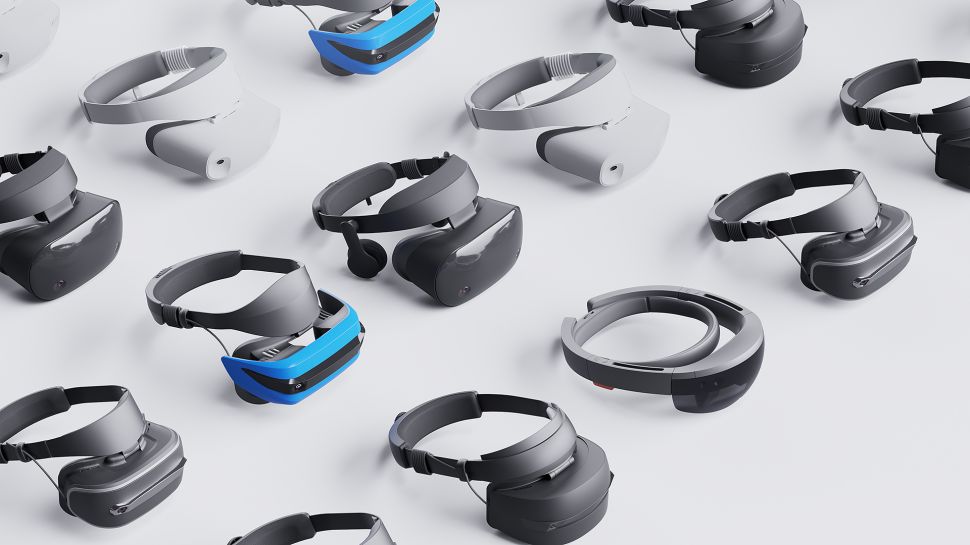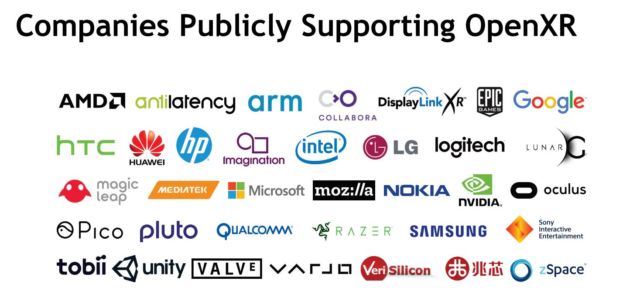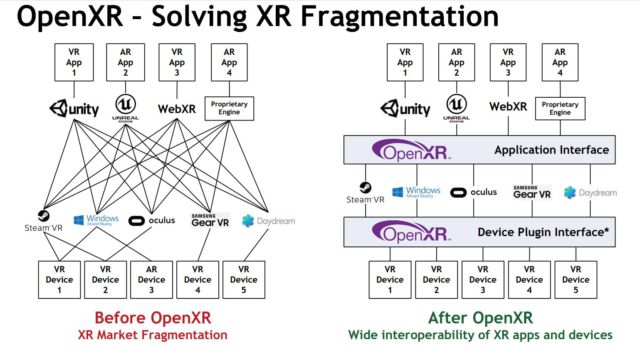Khronos Group Has Released a New OpenXR 1.0 Specification for XR Developers
The Khronos Group has publicly released a new specification for OpenXR known as OpenXR 1.0. The new specification is geared at helping unify the standards for virtual reality and augmented reality which are collectively known as XR. The specification is already available on Github.
OpenXR refers to an open standard put in place to enable developers to use code across multiple XR platforms. These sets of standards help provide high-performance as well as cross-platform access for both virtual reality and augmented reality devices and platforms.

Some of the leading tech players across the globe such as Microsoft, HTC, Oculus and SteamVR are members of the Khronos Group and have pledged their support for the standards. Microsoft integrated OpenXR support for its Windows Mixed Reality devices last week.
The new specification will go a long way in driving forward XR. With the Khronos 1.0 release, the working group is aiming to evolve the standard set while also keeping in place backwards compatibility. This will provide both hardware vendors and software developers with a strong foundation that they can leverage to give end users a portable and compelling user experience.
The launch of the OpenXR 1.0 version by the working group has incorporated community feedback from the provisional specification that was released in March this year. According to the working group, that feedback has been key to steering the team to a major milestone. The working group will continue refining the specification and the next course of action involves finalizing a comprehensive suite, integrating key game engine support and planning the next sets of features in order to evolve a cross-platform standard for XR platforms that will be truly vibrant. The road is now open for software developers in the XR industry to start leveraging on the OpenXR for their work.
Several companies are also planning to demonstrate the OpenXR 1.0 specification during the SIGGRAPH 2019 including Epic Games (they are planning to release OpenXR support for their widely popular Unreal Engine game development tool), Microsoft, and Varjo. Oculus is also planning an OpenXR implementation soon for its Quest and Rift platforms. Pledges of support for the specifications have also come from Huawei. Nokia, Intel, Mozilla, Google, Valve, HTC, Samsung, Qualcomm, Logitech, Sony, Magic Leap, NVIDIA and Intel among others.

OpenXR Solves the XR Fragmentation Problem
The OpenXR cross-platform standard was formed out of the need to create virtual reality and augmented reality applications and engines that are capable of using one another’s proprietary APIs. It eliminates the need to have new input devices that have to utilize customized driver integration. OpenXR also makes it possible for applications to run on any system with the OpenXR APIs. The standard will enable input manufacturers to self-integrate their driver runtimes exposing the device plug-in interfaces.

Both VR and AR are still in the early stages of development compared to other more developed technologies that have been around for decades. As a result, there is still the problem of cross-platform support and compatibility and having open standards helps bridge this gap and steer the industry forward.
https://virtualrealitytimes.com/2019/07/31/khronos-group-has-released-a-new-openxr-1-0-specification-for-xr-developers/https://virtualrealitytimes.com/wp-content/uploads/2019/03/OpenXR-Cross-Platform-Play-600x337.jpghttps://virtualrealitytimes.com/wp-content/uploads/2019/03/OpenXR-Cross-Platform-Play-150x90.jpgMixed RealityTechnologyThe Khronos Group has publicly released a new specification for OpenXR known as OpenXR 1.0. The new specification is geared at helping unify the standards for virtual reality and augmented reality which are collectively known as XR. The specification is already available on Github. OpenXR refers to an open standard...Sam OchanjiSam Ochanji[email protected]EditorVirtual Reality Times - Metaverse & VR
